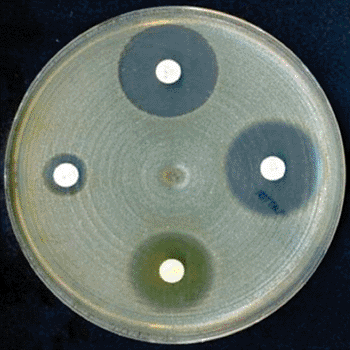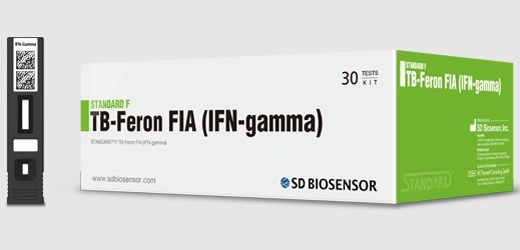Nutrient Agar Substituted for Blood in Antibiograms
By LabMedica International staff writers
Posted on 17 Sep 2012
In laboratories in the developed world, blood agar plates are used to test antibiotic sensitivity of bacteria, but in resource poor laboratories, this may not be feasible.Posted on 17 Sep 2012
Beta-hemolytic Streptococcus species also grow on Standard Nutrient Agar 1 (StNA1 and it has been suggested this type of nutrient medium could be used for running agar diffusion tests.

Image: Antibiotic disc diffusion (Photo courtesy of The European Committee on Antimicrobial Susceptibility Testing).
Bacteriologists at Globolab eV Laboratory (Assling, Germany) conducted 103 comparative tests to evaluate the growth characteristics of beta-hemolytic Streptococcus spp. on StNA1 compared to Müller–Hinton agar supplemented with 5% sheep blood (B-MH). The specimens were obtained from patients admitted to a cooperating hospital in Germany and 16 beta-hemolytic streptococci strains were obtained.
Bacteria to be tested are streaked uniformly across a culture plate. Paper disks impregnated with eight different antibiotics (Oxoid; Wesel, Germany) to be tested are placed on the surface of the gelatinous agar. During incubation of the agar plate, the antibiotics diffuse from the disks into the surrounding agar. An effective agent will inhibit bacterial growth, and the size of such a zone of inhibition (ZoI) around the disk is measured. The relative effectiveness of a compound is determined by comparing the diameter of the ZoI with values in standard tables.
The authors found that found in 99 out of 103 (96.12%) of all cases that the absolute values of ZoI differences were smaller than or equal to 3 mm, and 92 out of 103 (89.32%) were smaller than or equal to 2 mm. The Standard Nutrient Agar 1 (StNA1) is marketed by Carl Roth GmbH (Karlsruhe, Germany) can be used for culturing Enterobacteriaceae, Pseudomonas spp., Staphylococcus spp., and Streptococcus spp. The B-MH used in the study was obtained from bioMérieux (Marcy l'Etoile, France).
The authors concluded that although blood agar is always the better choice for several reasons, the reading of the ZoI is often easier on StNA1 than on B-MH. This is because StNA1 is more transparent and, therefore, the edges between bacterial growth and the inhibition zone can be discerned more easily. In such places where no blood agar is available for conducting antibiograms, StNA1 is an appropriate substitute for blood-supplemented Müller–Hinton agar. The study was published on August 29, 2012, in the European Journal of Clinical Microbiology & Infectious Diseases.
Related Links:
Globolab e.V. Laboratory
Oxoid
Carl Roth GmbH









 Analyzer.jpg)




